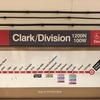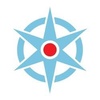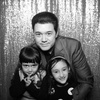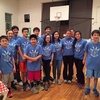
Chicago’s Near North Side. In the early to mid-twentieth century it was a playground for the rich, transient stopover for the poor, home to beatniks, hippies, harlots, the Rush Street entertainment district and the Outfit. Historically a multi-ethnic stew, within its boundaries could be found Swede Town; German Broadway; Little …

With a family of six and a full-time job, researching and writing full-length articles about family and community was becoming exceedingly difficult. However, the thirst to research our Chicago Nikkei community's past and present had not fizzled, as I feel it important to leave these stories for my kids, the …

This month, we feature just one writer and a beloved one to the Discover Nikkei space at that—Chicago native, Erik Matsunaga. Erik’s piece is a simple moment between old childhood pals and one that sets an image of “home” or places of significance that are, at once, transient and meaningful…enjoy.

In the late 1960s, a group of Los Angeles Japanese American ex-gang members, many at the time either fresh out of correctional facilities or the military, came together to save a generation. They called themselves the Yellow Brotherhood, and organized to get at-risk Asian American youth off drugs and out …

Prior to WWII, there were roughly four hundred persons of Japanese ancestry living in Chicago. By 1945, there were twenty thousand, the majority of whom were ex-West Coast Japanese Americans resettled from various WWII U.S. War Relocation Authority concentration camps.